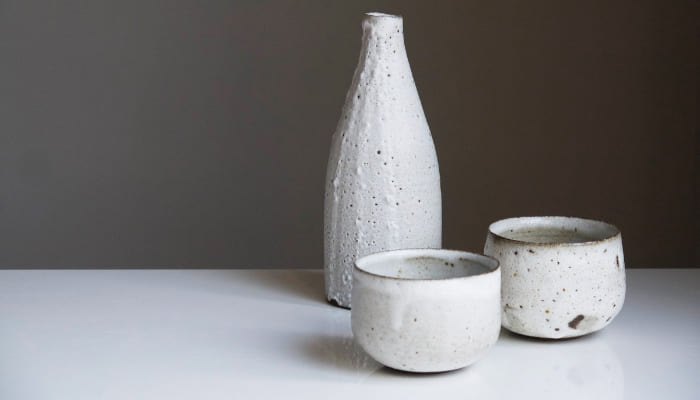Submission Deadline
28 February 2026
Judging
Date
24 & 25 March 2026
Winners Announcement
22 April 2026
28 February 2026
24 & 25 March 2026
22 April 2026

Sake sales – or to give sake its proper name, nihonshu (sake essentially means ‘alcohol’, or any alcoholic beverage, in Japanese) – are certainly on the up since the start of the century, with exports having increased by over 300% to 26 million litres, today worth over ¥22 billion / just shy of £150 million, an increase of some 700%. Whilst the US is the biggest export market, taking around 30% of shipments, the UK, centered on London, is sake’s biggest market in Europe.

This has come about in part because sake really opens up a different world of tastes and flavors, stretching from rich and full-bodied, to light, delicate and dry… and from subdued to highly fragrant. The flavor of good nihonshu is a balance between sweetness, acidity, astringency, bitterness, together with umami, now recognized as one of the five basic tastes (the other four being sweet, sour, salt, and bitter) and is best described as rich and savory. These complex and varied flavors and aroma profiles differ by sake type, the ingredients used, the region of production and its climate, its age, and the brewing technique, not to say the actual brewer.
Like wine (although thought of as a ‘rice wine’, sake is made by brewing a special strain of rice, using a particular culture, and as such is technically closer to beer than wine), and much like other craft drinks, sake provides real appeal to chefs, sommeliers, and mixologists, with plenty to satisfy the broad range of consumer tastes. Sake is every bit as complex as wine and experienced sake tasters, like sommeliers, distinguish between the ‘top notes’ that rise from the sake when held to the nose, as well as the ‘in mouth’ aroma and ‘mouthfeel’, and the finish that lingers after swallowing.
It’s the growing consumer interest in premium craft products across the board, particularly marked over the last 10 years, and the use of quality ingredients, known provenance and the skill of the producer that’s another reason behind the strong growth in both volume and value of sake (premiumization has value growing twice as fast as volume) – just as it has with craft spirits, beers, and ciders.
In restaurant terms, sake has become something of a passion among a number of the world’s top chefs and sommeliers, with premium sake being featured on the beverage menus of top restaurants in the USA, Europe, and the Far East – one top French chef even commissioning a sake specifically to complement French cuisine. Increasingly, too, chefs are exploring the pairing of fine sake with fine food. It’s not just Japanese food that’s being paired either, but a number of European cuisines, as well as Chinese and Asian fusion.
In fact, because it’s a drink quite like no other, Japan’s millennia-old national beverage has become something of an international status drink – but it pays to know what makes one sake different from another.
Sake is categorized by grade, style and the amount of polishing the rice receives before fermentation, with this information included on the label to indicate quality. Unlike wine, but like many spirits, sake doesn’t mature with age once bottled. 70% of sake is termed futsushu: it’s the least expensive and the fermented rice contains both added alcohol and sugars. Junmai (meaning ‘pure rice’) is made from polished fermented rice and, as it’s dry with a slightly citrusy, refreshing element, is a better choice as a cocktail. Honjozo has a little brewer’s alcohol added to the fermenting rice. To produce premium sake, the rice is first polished to remove the outer bran and proteins, in the process losing 30% and more of its original size. Honjozo sake has 70% of the grain remaining, whereas junmai has 60% remaining, as has ginjo. Daiginjo sake, on the other hand, has had 50% removed – the point being the more the original rice grains are polished, the more elegant and refined the resulting sake.
If you’re going to build a sake list, you need to be aware of the different styles. Most sake is slightly more alcoholic than wine, at around 15%-16% when bottled. Genshu, however, is the exception and is a ‘full strength’, undiluted sake, typically bottled at 18-20%. It’s this style, served slightly chilled, that’s most often drunk with sashimi.
Koshu is sake that’s been aged and there’s a lot of interest by sommeliers in the West about this style. There’s no one way to age sake, neither is there only one way aged sake should taste – higher aging temperatures, the use of larger holding vessels (tanks) tends to produce greater changes in color and strength of flavor, whilst colder temperatures and smaller vessels produce less noticeable, subtler color and flavor variations. The arrival of younger, more experimental, craft sake ‘owner-brewers’ in Japan and micro-breweries in other countries, including the UK, has produced a greater range of flavor profiles that reflect the craft approach to sake brewing. It’s this that makes it such a fascinating beverage for sommeliers and chefs alike.
Completing the range of styles is nigori sake which tends to have a cloudy appearance because it undergoes less filtration than others, whilst nama sake is unpasteurized and requires to be refrigerated in terms of storage. Actually, all sake needs somewhat careful storage, even with versions that can be stored at ambient temperature – sake doesn’t improve with bottle aging and should ideally be consumed within a year of its bottling.
Sake is extremely versatile and, as such, is a food-friendly beverage, even with western foods. Generally, the Japanese prefer to drink it as an aperitif, with sashimi and lighter canapes or with starters, whilst Western restaurants will often serve sake during a meal. Actually, the Japanese don’t talk about ‘pairing’, but ‘marriage’ and wine and food pairing aficionados can be surprised at how well sake can accompany western foods – and there is really no ‘standard’ way to pair. However, it does make sense to pair heavier sake with heavier food and lighter sake with lighter food. Ginjo sakes have fruity aromas, so they’re ideal as an aperitif, with vegetable dishes or as a palate-cleanser between courses. They also go well with oysters.
Sweeter, nama sakes, pair well with salty food, as well as vegetables like asparagus or salads like a rocket, but also fresh strawberries and mango, or hot or cold dishes containing such bold, fruity flavors. Junmai sakes will pair nicely with an oily fish or grilled meat because their acidity cuts through fat. For spicy food, pair with a rich nigori sake; as a digestif, drink a genshu.
In a bar context, creating a great sake list is as much about the cocktails that can be made to tempt your clientele using high quality, higher alcohol genshu sake or a junmai. Like a Zucchini Sake, made with zucchini water, or a Sake Champagne Mojito. Sake can also be mixed with another spirit, such as gin or vodka, or goes well with fruit liqueurs, such a strawberry, cherry, and raspberry, or more ‘savoury’ flavors such as ginger and lemongrass.
Long a traditional drink limited to its country of origin and indigenous cuisine, today sake is a modern, premium, craft-inspired beverage with global reach whose growth is as inspiring as the modern beverage itself. The range of categories and styles, its range of flavors and its flexibility as an accompaniment to food, an ingredient in a dish, a stand-alone drink or cocktail ingredient makes it as worthwhile to build a sake list as it is gin, vodka, whiskey or brandy.

The article is contributed by Alistair Morrell, Wine Inspector, wine industry consultant, journalist and, commentator. Over 30 years as a wine business professional, Alistair shares his global knowledge, network, and experience of growers, importers, distributors and buyers.
Show your spirits where it matters. Get your products tasted by top bartenders, buyers and experts at the London Competitions — enter now.